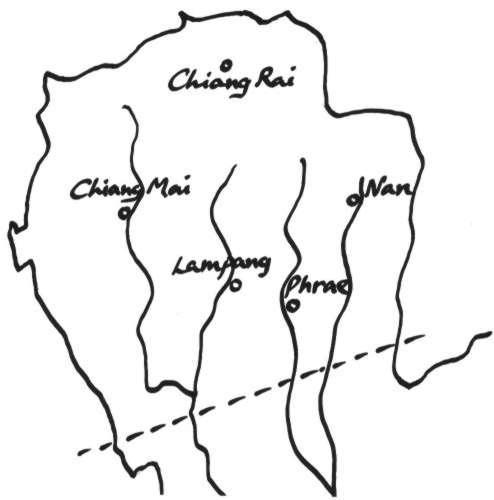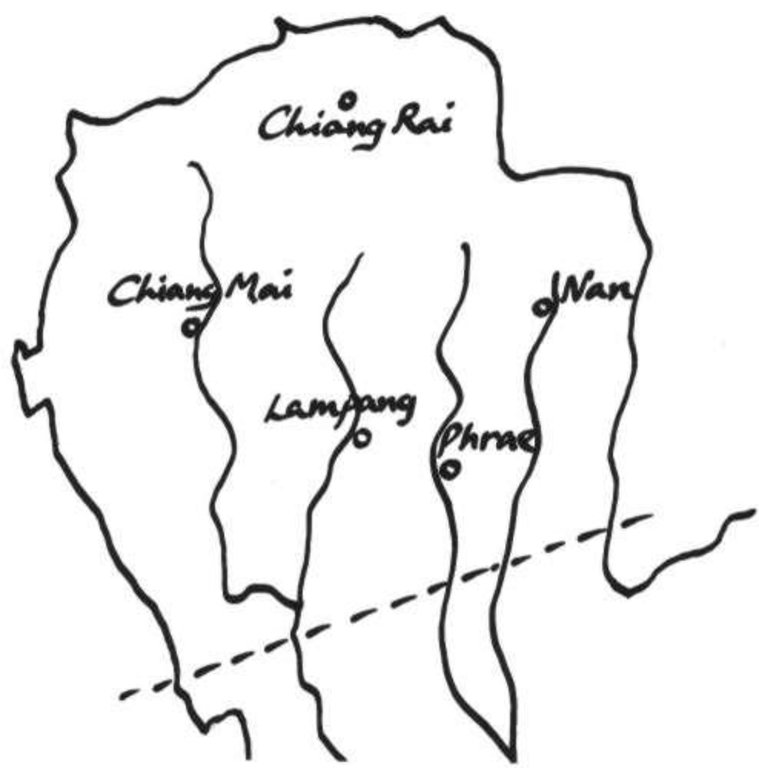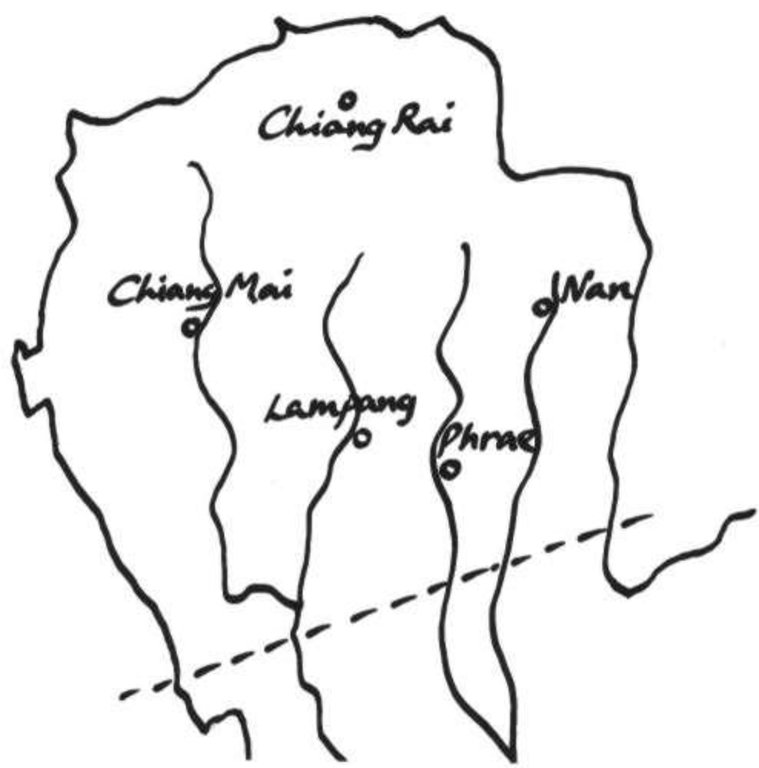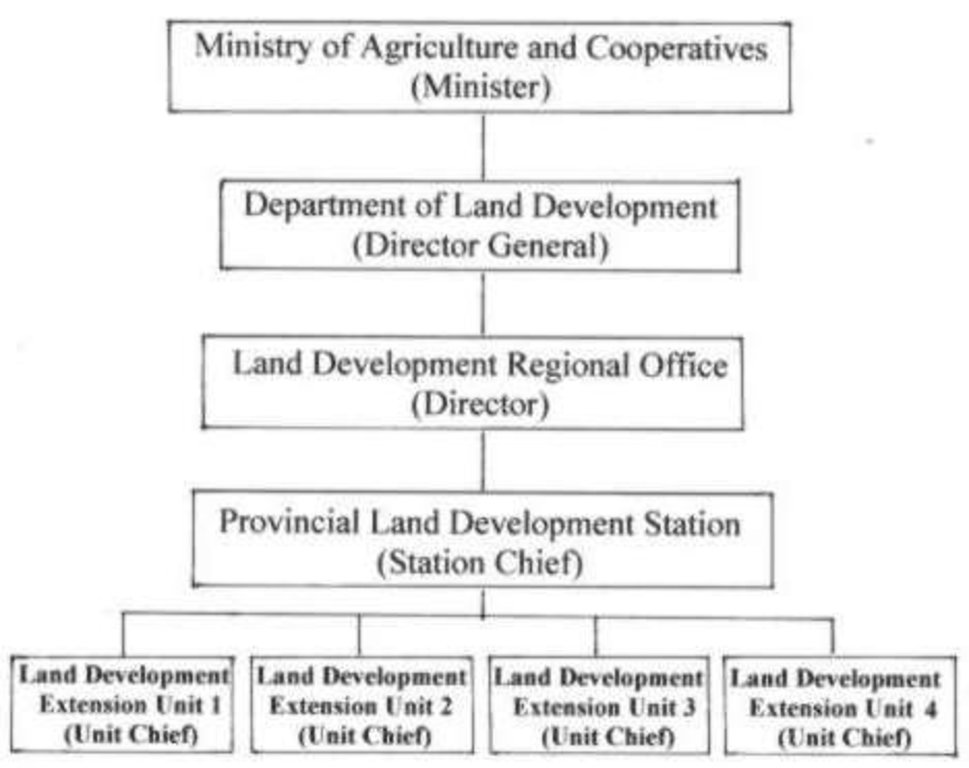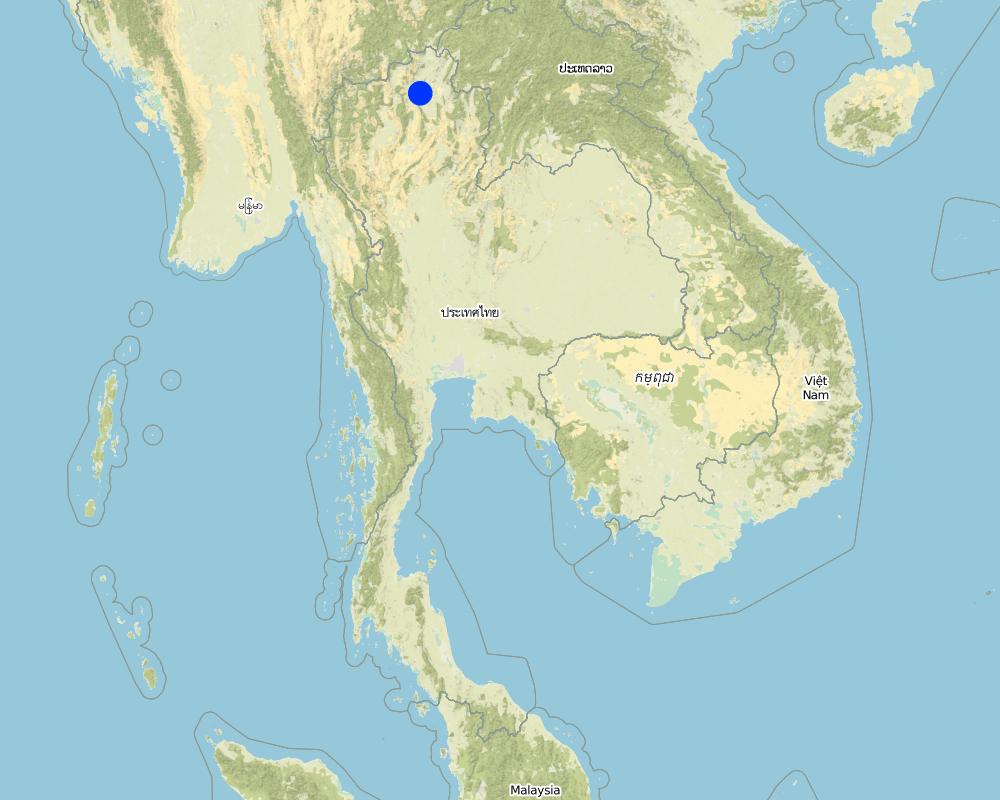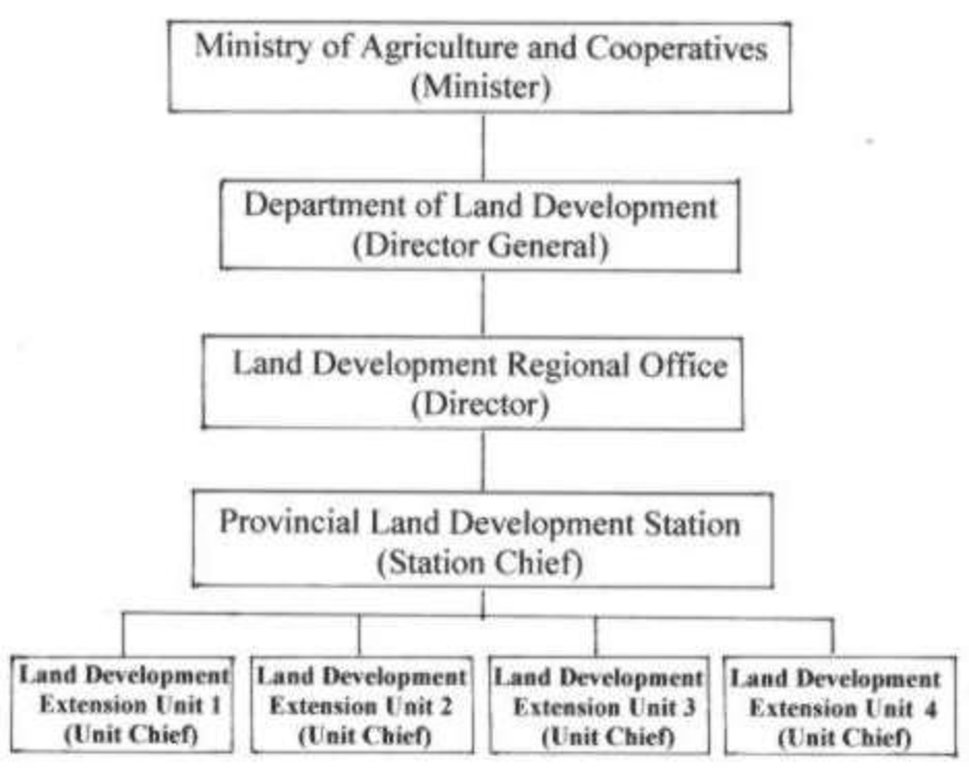Vegetative erosion control and conservation cropping system [Thailand]
- Creation:
- Update:
- Compiler: Samran Sombatpanit
- Editor: –
- Reviewer: Fabian Ottiger
approaches_2417 - Thailand
View sections
Expand all Collapse all1. General information
1.2 Contact details of resource persons and institutions involved in the assessment and documentation of the Approach
SLM specialist:
Boonchee Sawatdee
66-1-9513859, 66-53-890109
boonchee@thai2k.com
LDD Regional Office 6
Amphur Maerim, Chiang Mai 50180
Thailand
SLM specialist:
Name of the institution(s) which facilitated the documentation/ evaluation of the Approach (if relevant)
World Association of Soil and Water Conservation (WASWC) - ChinaName of the institution(s) which facilitated the documentation/ evaluation of the Approach (if relevant)
Swiss Agency for Development and Cooperation (DEZA / COSUDE / DDC / SDC) - Switzerland1.3 Conditions regarding the use of data documented through WOCAT
The compiler and key resource person(s) accept the conditions regarding the use of data documented through WOCAT:
Yes
1.4 Reference(s) to Questionnaire(s) on SLM Technologies

Growing cover crops for weed control [Uganda]
Cultivating leguminous crops in weed prone fields to help overgrow and kill the weeds
- Compiler: Sunday Balla Amale
2. Description of the SLM Approach
2.1 Short description of the Approach
This approach is 'the way' or 'how' the 'vegetative erosion control and conservation cropping system' has been implemented in the Upper North region of Thailand.
2.2 Detailed description of the Approach
Detailed description of the Approach:
Aims / objectives: The purpose of this approach is to have sloping land used in a sustainable way, by planting hedgerows along the contour line, allowing enough space for growing cash- and other crops. In the process, government officers will work with sloping land farmers, promoting them to do the system by giving assistance in the form of necessary farm inputs and wage for doing the work. The work starts with site selection, land preparation, alignment of contour lines, establishing hedgerows, growing crops -- cash crops and tree crops, etc. At the same time extension workers will provide farmers with training in various aspects of SWC, and visits to demonstration fields and farms.
2.3 Photos of the Approach
2.5 Country/ region/ locations where the Approach has been applied
Country:
Thailand
Region/ State/ Province:
Upper North
Map
×2.7 Type of Approach
- project/ programme based
2.8 Main aims/ objectives of the Approach
The Approach focused mainly on SLM with other activities (Cropping system that will enable farmers to earn reasonable income for their living.)
1. To reduce soil erosion. 2. To improve soil fertility. 3. To increase crop yied and income.
The SLM Approach addressed the following problems: Accelerated soil erosion and land degradation, low soil productivity, poor water conservation, low income, damaged environment.
2.9 Conditions enabling or hindering implementation of the Technology/ Technologies applied under the Approach
social/ cultural/ religious norms and values
- hindering
Low literacy rate
Treatment through the SLM Approach: Improve education.
institutional setting
- hindering
The number of extension workers is few.
Treatment through the SLM Approach: Employ more of them.
legal framework (land tenure, land and water use rights)
- hindering
Farmers without land title are reluctant to implement SWC.
Treatment through the SLM Approach: Promote land reform programme.
This type of approach/technology does not need too much of involvement in the land use right or ownership, particularly when there is no major disturbance of soil surface for constructing structural measures.
knowledge about SLM, access to technical support
- hindering
Technologies take long time to show benefit.
Treatment through the SLM Approach: 1. Find technologies which give short-term benefit. 2. Create awareness to farmers.
3. Participation and roles of stakeholders involved
3.1 Stakeholders involved in the Approach and their roles
- local land users/ local communities
Specific ethnic groups: H'mong, Akha, Kare, etc. Also poor peasant farmers
- national government (planners, decision-makers)
Land Development Department
- international organization
If several stakeholders were involved, indicate lead agency:
Alley cropping was designed by IITA and grass strip by Australian specialists. They were introduced into Thailand around 1985 and subsequently adapted by national specialists for applying in the Northern Agricultural Land Development Project, supported by the World Bank.
3.2 Involvement of local land users/ local communities in the different phases of the Approach
| Involvement of local land users/ local communities | Specify who was involved and describe activities | |
|---|---|---|
| initiation/ motivation | none | |
| planning | passive | public meetings |
| implementation | passive | responsibility for minor steps |
| monitoring/ evaluation | passive | public meetings; |
| Research | none |
3.3 Flow chart (if available)
3.4 Decision-making on the selection of SLM Technology/ Technologies
Specify who decided on the selection of the Technology/ Technologies to be implemented:
- mainly SLM specialists, following consultation with land users
Explain:
consultative.
Decisions on the method of implementing the SLM Technology were made by mainly by SLM specialists with consultation of land users. consultative. With financial assistance provided
4. Technical support, capacity building, and knowledge management
4.1 Capacity building/ training
Was training provided to land users/ other stakeholders?
Yes
Specify who was trained:
- land users
- extensionists/trainers, school children/students,
Form of training:
- on-the-job
- farmer-to-farmer
- demonstration areas
- public meetings
- courses
Subjects covered:
Short training (1-2 days) in cropping system and land use management at a nearby locality where technicians explain how the approach is useful for farmers and how to do.
4.2 Advisory service
Do land users have access to an advisory service?
Yes
Specify whether advisory service is provided:
- on land users' fields
Describe/ comments:
Name of method used for advisory service: TAF; Key elements: Training, Action, Follow-up.; 1) Advisory service was carried out through: Government's existing extension system. Extension staff: Mainly government employees 3) Target groups for extension: land users; Activities: To know how to cope with soil degradation problem
Advisory service is inadequate to ensure the continuation of land conservation activities; There are too few SWC extensionists to work with farmers efficiently, making the activity not so well handled and maintained.
4.3 Institution strengthening (organizational development)
Have institutions been established or strengthened through the Approach?
- yes, moderately
Specify the level(s) at which institutions have been strengthened or established:
- local
Specify type of support:
- capacity building/ training
4.4 Monitoring and evaluation
Is monitoring and evaluation part of the Approach?
Yes
Comments:
technical aspects were ad hoc monitored through observations; indicators
There were few changes in the Approach as a result of monitoring and evaluation: 1. Change in cropping system to fit the farmers' need and market. 2. Some farmers have expanded more area for SWC approach.
4.5 Research
Was research part of the Approach?
Yes
Specify topics:
- sociology
- economics / marketing
- technology
Give further details and indicate who did the research:
Research mainly concerns technology development and efficiency in decelerating soil ersoion and improving soil fertility.
Research was carried out both on station and on-farm
5. Financing and external material support
5.1 Annual budget for the SLM component of the Approach
If precise annual budget is not known, indicate range:
- 100,000-1,000,000
Comments (e.g. main sources of funding/ major donors):
Approach costs were met by the following donors: government (national - Dept. of Land Development.): 100.0%
5.2 Financial/ material support provided to land users
Did land users receive financial/ material support for implementing the Technology/ Technologies?
Yes
5.3 Subsidies for specific inputs (including labour)
- agricultural
| Specify which inputs were subsidised | To which extent | Specify subsidies |
|---|---|---|
| seeds | fully financed | Only during establishment |
| fertilizers | fully financed | Only during establishment |
| Biocides | fully financed | Only during establishment |
- infrastructure
| Specify which inputs were subsidised | To which extent | Specify subsidies |
|---|---|---|
| community infrastructure | fully financed | Only during establishment |
If labour by land users was a substantial input, was it:
- rewarded with other material support
Comments:
Planting materials, training, advise
5.4 Credit
Was credit provided under the Approach for SLM activities?
No
6. Impact analysis and concluding statements
6.1 Impacts of the Approach
Did the Approach help land users to implement and maintain SLM Technologies?
- No
- Yes, little
- Yes, moderately
- Yes, greatly
They are more aware of what they should do to improve soil and water management such as mulching, green manuring fertilizer application and addition of organic matter.
Did other land users / projects adopt the Approach?
- No
- Yes, little
- Yes, moderately
- Yes, greatly
Such as Thai-Australian Highland Development Project
6.3 Sustainability of Approach activities
Can the land users sustain what has been implemented through the Approach (without external support)?
- yes
6.4 Strengths/ advantages of the Approach
| Strengths/ advantages/ opportunities in the land user’s view |
|---|
| 1. Improve soil fertility and productivity |
| 2. Increase income |
| 3. Attain sustainable land use. |
| Strengths/ advantages/ opportunities in the compiler’s or other key resource person’s view |
|---|
| 1. The approach can reduce soil loss/runoff (How to sustain/ enhance this strength: Try to integrate annual cash crops and fruit trees) |
| 2. Improve soil fertility |
| 3. Conserve soil moisture |
| 4. Increase yield/income |
| 5. Preserve the environment |
| 6. Easily implemented by farmers |
| 7. It requires low cost. |
6.5 Weaknesses/ disadvantages of the Approach and ways of overcoming them
| Weaknesses/ disadvantages/ risks in the land user’s view | How can they be overcome? |
|---|---|
| 1. Require more labour to create and maintain | 1. Grow fast-growing tree specie, |
| 2. Certain part of the land cannot be used to grow crops. | 2. Hire more labourers from the increased income. |
| Weaknesses/ disadvantages/ risks in the compiler’s or other key resource person’s view | How can they be overcome? |
|---|---|
| 1. More labour intensive than normal farming practice | Good labour management |
7. References and links
7.1 Methods/ sources of information
- field visits, field surveys
- interviews with land users
7.2 References to available publications
Title, author, year, ISBN:
Sajjapongse, A.., C.Anecksamphant and S. Boonchee. 2000. ASIALAND Management of Sloping Land Network. Special Lecture, LDD Technical Meeting, February 15-18, 2000, Chjiang Mai, ThailandOther documents of IBSRAM
Available from where? Costs?
Department of Land Development, Bangkok 10900, ThailandIBSRAM. P.O. Box 9-109, Bangkok 10900, Thailand
Title, author, year, ISBN:
Other documents of IBSRAM
Available from where? Costs?
IBSRAM. P.O. Box 9-109, Bangkok 10900, Thailand
Links and modules
Expand all Collapse allLinks

Growing cover crops for weed control [Uganda]
Cultivating leguminous crops in weed prone fields to help overgrow and kill the weeds
- Compiler: Sunday Balla Amale
Modules
No modules


